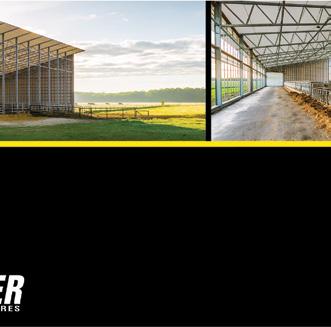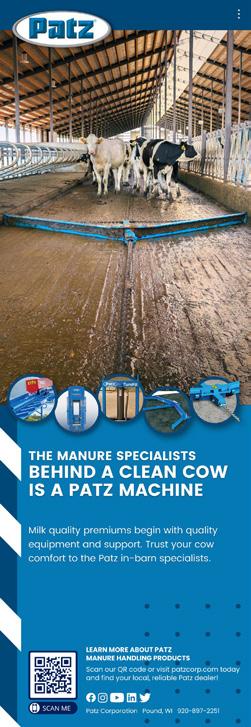
2 minute read
MOVING MILK
A precision process by highly trained professionals
By Robert Price
EACH DAY, ABOUT 8.5 MILLION LITRES OF MILK are moved from Ontario dairy farms to plants for processing. That works out to about 3.1 billion litres a year.

The movement of milk is so precise and efficient that the hard work of keeping milk safe for consumption throughout this process often goes unnoticed. Consumers rarely think about how milk moves from the cow to the table, and they shouldn’t have to.
It’s a precision process; the product of highly specialized work conducted by highly trained professionals.

The Process
The process that maintains milk quality begins long before a Bulk Tank Milk Grader (BTMG) pulls up to a farm. Each driver must first apprentice to obtain a BTMG certificate, work for a milk transport company recognized by the Dairy Farmers of Ontario (DFO), and pass a written exam. The certification process, as outlined in regulation 761 of the Milk Act, ensures drivers develop an expertise in ensuring milk quality. Drivers must recertify every five years.

“In Ontario, only a BTMG can pick up and transport milk,” says Joanna Yalcinkaya, Program Manager, Raw Milk Quality, Dairy Farmers of Ontario. “The drivers must be certified to ensure milk quality is never compromised. These aren’t widgets they’re transporting.”
The certification process trains drivers to test and grade milk to ensure quality of product. The testing is regular and rigorous.
Scott Wark, President of Wark Milk Transport and President of the Ontario Milk Transportation Association, says drivers are critical in ensuring the quick transit of quality milk.
“Without drivers, milk doesn’t leave the farm,” he says.
Before drivers pick up a load of milk, they inspect and grade the milk by looking at it, smelling it, and measuring its temperature. Drivers also take samples of the milk which Milk occurs every other day for most farms
630 BTMG drivers in Ontario
285 daily deliveries are tested for bacterial concentrations, and every load is tested for antibiotics. Contaminated loads, which are rare, are destroyed.
“In terms of overall quality of the milk getting to market, it is our job to ensure that milk that is off-grade doesn’t get put into tankers,” says Wark.
It’s simple: If the milk doesn’t pass the quality inspection, it doesn’t ship.
Btmgs
“Milk quality has to be preserved once it leaves the farm, so we need to ensure we start with the highest quality possible,” says Jeff Hyndman, Assistant Director, Raw Milk Quality and Quality Assurance Programs at DFO. “BTMGs are an important part of the quality control process.”
In Ontario, the tanker trucks which are used to transport milk, undergo continuous maintenance. At the end of each day, trucks are emptied, washed, rinsed, sanitized, and sealed for the next day. At the end of each week, the trucks are given an additional wash to make sure calcium doesn’t build up. The insulated tanks ensure the temperature of milk doesn’t drop more than one degree in 24 hours. But with same-day delivery of milk to processors for nearly all transports, milk usually arrives at the same temperature it left the farm.
Robert Nosek, Director of Logistics at DFO, coordinates the fleet of 226 trucks for the 104,000 milk pickups and deliveries across Ontario each year.
226 approved trucks 81 processors
In addition to transportation, the Logistics Team is also responsible for milk allocation, sample transportation, metering and calibration. Their role is critical to getting milk to processors in the most efficient way possible.
“Cows don’t stop producing milk, so our team is always on to make sure pick-ups are on track and that there’s somewhere for the milk to go,” says Nosek. “We are the connection between the farm and the plant, and we work collaboratively with our transporters so that consumers always have high-quality milk and dairy products available to them.”






